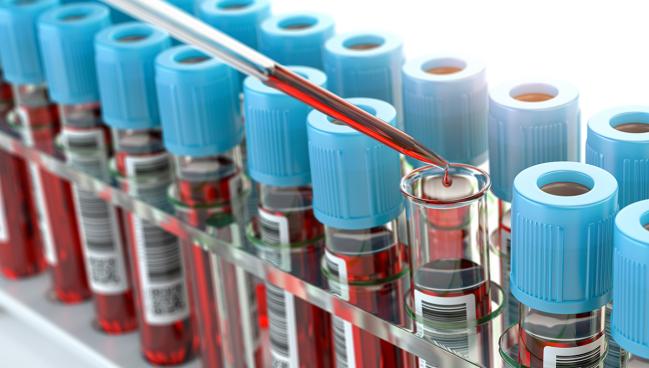The Hunt for Protein Culprits in COVID-19’s Cardiac Complications
Proteomics research has identified key pathways that might one day be targeted with developing therapies, say experts.

For 2 years, physicians and scientists have puzzled over the cardiovascular complications from COVID-19, but new proteomics research is helping to shed light on some of the biological mechanisms driving this heightened risk.
In the study, which analyzed thousands of candidate proteins, investigators identified key pathways activated in patients with COVID-19-related myocardial injury, vascular thrombosis, and heart failure. Their findings suggest that the senescence-associated secretory phenotype (SASP), which is a marker of biological aging, may play a key role in COVID-19 disease severity and cardiac involvement. In addition, increased activin/TGFβ signaling, previously associated with heart failure, and the downregulation of the antithrombotic protein ADAMTS13, were the biological processes most strongly associated with myocardial stress and injury in COVID-19 patients.
“Plasma proteomics enables us to measure levels of multiple proteins circulating in the blood,” explained lead investigator Jason Roh, MD (Massachusetts General Hospital, Boston, MA). “Using a technology developed by SomaLogic, we were able to measure almost 5,000 protein analytes in the blood of patients with COVID-19. Our goal with this initial study was to try to gain insights into why certain people develop cardiac complications with COVID-19 while others do not. That’s where we started. What it and the follow-up validation studies revealed to us was that there does seem to be specific biology underlying these cardiac complications that importantly could potentially be actionable.”
The study, led by Roh and senior investigator Anthony Rosenzweig, MD (Massachusetts General Hospital), was performed during one of the first COVID-19 surges in the US, at a time when researchers were seeing a lot of infected patients hospitalized with accompanying cardiac complications. “It just wasn’t very clear why these things were happening,” said Roh.
Senescence Cells and More
The first case-control proteomics study, which was published May 4, in JACC: Basic to Translational Science, included 80 adult patients (mean age 64 years; 41% women) with clinical biomarker and echocardiography data assessed for cardiac complications. Key findings were validated in a second cohort of 305 COVID-19 patients, in addition to an animal model of COVID-19.
The initial proteomics study was designed to discover how blood proteins differ in COVID-19 patients who experience cardiac complications versus those who do not. This included 26 healthy controls without COVID-19, 25 with moderate COVID-19, half of whom had cardiac complications and half who did not, and 29 patients with severe COVID-19, half of whom had low degrees of cardiac complications and half who had a high degree of cardiac complications. Moderate COVID-19 was defined as a hospitalization, while severe disease included hospitalized patients who required the ICU. Study subjects were matched based on age, sex, race, and comorbidities.
The researchers first looked to see what was different in the blood of COVID-19 patients compared to healthy, noninfected, controls. Although patients were of similar age, their initial analysis showed that the cellular senescence pathway, SASP, which is often viewed as a marker of aging cells, was the most highly enriched process in patients with COVID-19. Further analyses showed that it was also the most significantly upregulated process in COVID-19 patients with cardiac involvement. This finding was confirmed in the validation cohort.
“One thing we often do in these large-scale proteomic studies is something called pathway analysis, which enables us to look for overarching biological processes potentially changing with disease,” said Roh. “Interestingly, the pathway that showed the most significant association with disease severity and cardiac complications in COVID-19 patients was the senescence-associated secretory phenotype. This is a collection of proteins secreted by senescent cells, or cells that have undergone an irreversible process of growth arrest and is often associated with aging. We know that older individuals tend to have more senescent cells, but also that really severe infections can induce senescence, too.”
Indeed, a transcriptional profile of lungs from hamsters infected with SARS-CoV-2 also showed marked enrichment for SASP, a finding that confirms these age-related senescence genes can be turned on by SARS-CoV-2 infection.
“It’s interesting because if you take healthy, young animals and you infect them with SARS-CoV-2, you get this robust increase in SASP expression,” said Roh. “It’s almost like there’s a bidirectional relationship with COVID-19 and senescence. We think part of the reason why older individuals are at higher risk of severe disease and cardiac complications is that they probably have a higher burden of senescence at baseline. However, at the same time, the virus itself can actually trigger a senescence process, even in younger, healthier individuals. Whether these senescent cells persist after the initial infection and contribute to the syndrome of long COVID is unclear, but it is something being explored by multiple groups now.”
In addition to broader pathway analyses, the researchers also looked to see which specific proteins were the most strongly associated with elevated levels of troponin T and NT-proBNP, established biomarkers used to assess myocardial injury and heart failure, respectively. Of the 4,996 protein analytes assayed, ADAMTS13 was the most significantly downregulated protein associated with troponin T, while FSTL3, a marker of increased activin/TGFβ signaling, was the most significantly upregulated protein associated with NT-proBNP.
“What’s particularly interesting,” said Roh, “is that ADAMTS13 is a von Willebrand factor-cleaving protease whose loss-of-function is known to cause microvascular thrombosis, which is something we have seen in the hearts of COVID-19 patients with myocardial injury.”
Target Pathways With Developing Therapies
For Roh, their study is exciting because the three biological processes “make sense” based on past research. Low ADAMTS13 levels have been causally implicated in microvascular thrombosis and occlusion, and increased activin/TGFβ signaling has also been previously implicated in heart failure studies.
Just as exciting is the prospect that these processes might be targeted with future therapies that could specifically address cardiovascular complications in COVID-19, and importantly, potentially improve outcomes for these patients. Recombinant ADAMTS13 and activin/TGFβ inhibitors are currently under development for other clinical indications, and could potentially be repurposed for COVID-19 if additional investigations in preclinical models prove them to be safe and efficacious.
Additionally, the role of senescence in different disease processes, including COVID-19, has been increasingly recognized. Researchers are beginning to test whether targeting senescent cells with drugs known as senolytics can improve outcomes in COVID-19. Most of this work is still in the preclinical stages, but some groups are beginning to test these senolytics in select patients, said Roh.
Michael O’Riordan is the Managing Editor for TCTMD. He completed his undergraduate degrees at Queen’s University in Kingston, ON, and…
Read Full BioSources
Roh JD, Kitchen RR, Guseh JS, et al. Plasma proteomics of COVID-19-associated cardiovascular complications: implications for pathophysiology and therapeutics. J Am Coll Cardiol Basic Trans Science. 2022;Epub ahead of print.
Disclosures
- Roh reports no relevant conflicts of interest.





Comments